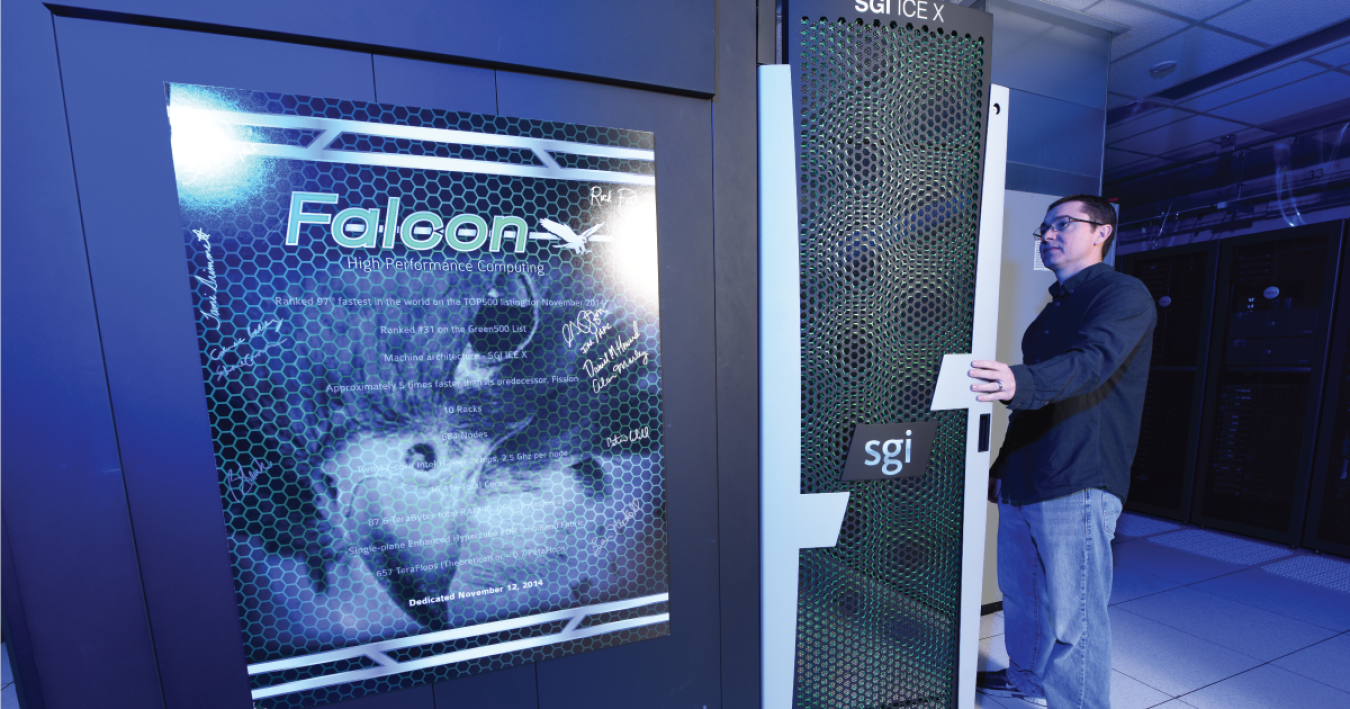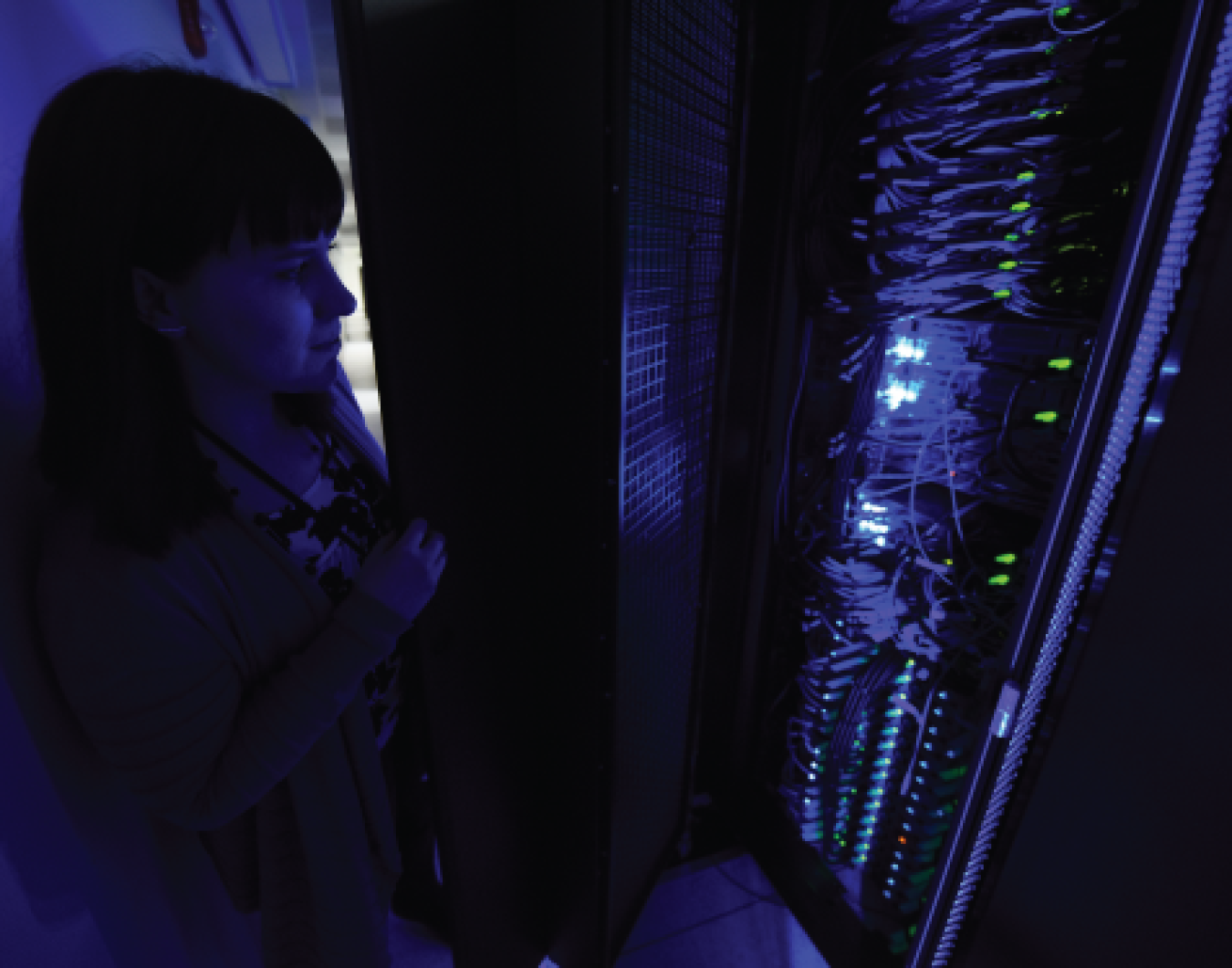Idaho National Laboratory is transferring management of the Falcon supercomputer to Boise State University, Idaho State University, and University of Idaho.
April 11, 2022

Idaho National Laboratory (INL) is transferring management of the Falcon supercomputer, currently managed under the U.S. Department of Energy (DOE) Nuclear Science User Facilities (NSUF) program, to Boise State University, Idaho State University, and University of Idaho. The transfer — after all hard disks and data are removed — will offer the students, researchers, and faculty increased access to advanced modeling and simulation capabilities. Idaho university students use supercomputers to model everything from heat exchangers to nanostructures and volcanic plumes.
Enabling Faster Computing
High-performance computing decreases the time it takes research teams to solve large, complex problems, while increasing their competitiveness. By extending access to this modern science and engineering capability, the Falcon system will allow university students to run an increased number of simulations.
Falcon will remain at the Collaborative Computing Center in Idaho Falls, managed by Idaho university staff and operated through the Center for Advanced Energy Studies. The arrangement will create additional opportunities for collaboration between the lab and universities.
“The transfer of the Falcon supercomputer is an investment in our future workforce,” said Eric Whiting, director of the Idaho National Laboratory’s Advanced Scientific Computing Division. “For university students, this is a unique opportunity to access world-class computing capability.”
Falcon’s Legacy of Success

Falcon first arrived at INL in 2014. Ranked 97th on the list of the world’s fastest supercomputers, it can perform a quadrillion calculations per second. Falcon can perform a full day of typical laptop computing in less than 2.5 seconds. The supercomputer has been an essential tool in improving DOE’s modeling and simulation capabilities.
Over its lifetime, Falcon provided computational support to numerous DOE programs. This includes the Nuclear Energy Advanced Modeling and Simulation program as well as the Consortium for Advanced Simulation of Light Water Reactors, which helped advance nuclear energy science and engineering from the earliest stages of research to market readiness.
Additionally, Falcon supported the development of INL’s MOOSE framework, a platform that simplifies the creation of simulations for a myriad of modeled systems. The supercomputer combined MOOSE applications with third-party tools to model complex nuclear reactor systems.
Supercomputers like Falcon advance modern science and engineering by providing a powerful tool to study physical systems in ways not otherwise possible. Falcon has served DOE and the INL well for many years and this transfer will ensure Falcon continues to serve the computational needs of university researchers for many more.
Learn more about DOE’s advanced modeling and simulation work.

